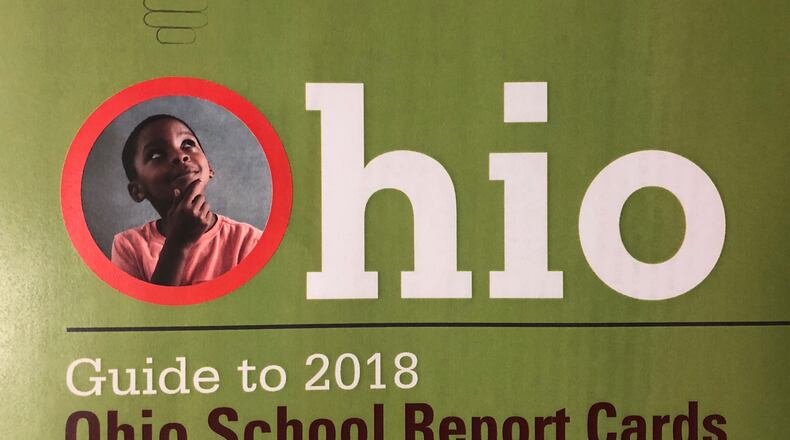JULY 2018: Report card legislation won’t happen this year
The overall grade will have a huge impact on Trotwood-Madison schools in particular. Under state law, Trotwood faces state takeover by an Academic Distress Commission if it receives an overall “F.” That’s because of students’ poor academic performance on state tests the past two years. They ranked last of Ohio’s 608 school districts last year.
The district has plowed forward with an aggressive turnaround plan — “From 608 to Great” — the past five months under interim superintendent Tyrone Olverson, who was a key leader in Youngstown schools’ distress commission until coming to Trotwood in April. Olverson and the school board have said they don’t know whether takeover is coming, but they’ve tried to motivate parents, students and staff.
“We will continue working as a learning community,” Olverson said in a message to staff this week. “A community where student learning is valued over everything.”
RELATED: State officials talk to Trotwood about improvement efforts
But the report card is a key marker for all Ohio schools, offering a wide range of data — raw test performance, student growth from year to year, graduation rates and high school success, early-grade literacy, plus how well subgroups of students by race, socioeconomics and disability are closing academic gaps.
There’s still disagreement over whether the overall grade is a good idea. Some, including Gov. John Kasich, have said the state report card has been too complicated, and giving the simple overall grade is easier for parents to understand.
Opponents of the overall grade have two primary arguments. One is that the state tests that are the basis of the report card don’t accurately measure school quality. Test results have consistently mirrored poverty data — kids in low-income communities tend to score lower, but more of those students also were academically behind as 5-year-olds before the school ever worked with them.
LAST YEAR: How did your district fare on the 16-17 report card?
LAST YEAR: Educators urge broader look at school quality
“I see the report card system as a very valuable tool, but it has flaws,” said state school board member Nick Owens. “I am concerned that the overall composite score won’t be a fair reflection of what’s actually happening in our schools and districts.”
Traditionally, local high-income communities such as Oakwood, Bellbrook, Beavercreek and others have seen their schools graded high based on student test scores, while low-income communities such as Dayton, Trotwood and Jefferson Twp. have been graded lower.
The other argument is that sticking a single label on each school will cause people to gloss over the detailed information in the report card that might give residents a more nuanced view of their schools – percentage of students who take advanced coursework, which subjects and grade levels made the most progress, teacher attendance rate and more.
RELATED: Fordham proposes changes to report card
The Fordham Institute released a detailed report supporting an overall grade, but calling for a formula that puts more weight on year-over-year student growth, saying that would be fairer to schools where more students start off behind.
“They reflect too strongly the backgrounds of students rather than the effectiveness of their schools,” said Aaron Churchill, Fordham’s Ohio Research director.
The Ohio Department of Education says the report card is intended to give parents and others information “to celebrate success and identify areas for improvement,” triggering local conversations on strengths and weaknesses, as well as intensive state support for the schools that struggle the most.
RELATED: Two state tests eliminated for Ohio students
But state officials acknowledge in their report card guide that “report cards are only one part of the story,” encouraging parents to visit schools, and encouraging schools to attach their own “quality profile” documents to the state’s report card.
“We need to judge our schools fairly, and we need to give community members, particularly parents and students, a snapshot of what’s happening,” Owens said. “But we need to make sure that snapshot accurately depicts the schools.”
About the Author

